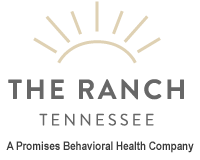Millions of people across the U.S. are affected by health conditions that trigger symptoms of ongoing, chronic pain. A number of opioid-based medications are commonly used to help people dealing with chronic pain; however, use of these medications (especially outside of an authorized context) inherently comes with significant risks for drug abuse and addiction. In a report published in September 2014, Dr. Nora Volkow, director of the National Institute on Drug Abuse, detailed the ways in which lack of information on the real-world effectiveness of opioids for chronic pain management may inadvertently contribute to nationwide opioid abuse and addiction risks.
Opioid Medication Abuse and Addiction
All opioid medications are directly or indirectly derived from painkilling, mind-altering substances that naturally occur in certain parts of a plant known informally as the opium poppy. Specific forms of these medications in use in America include morphine (Avinza, Kadian), codeine, oxycodone (Percocet, OxyContin), hydrocodone (Vicodin), fentanyl (Duragesic), hydromorphone (Dilaudid) and buprenorphine (Subutex, Suboxone). Doctors typically prescribe specific opioid products for specific types of moderate-to-severe short- or long-term pain. Opioid medications may also be used for other legitimate purposes, including the treatment of opioid addiction and the suppression of chronic coughs that don’t respond to other forms of medical treatment. Any opioid can trigger physical dependence and addiction by fostering long-term changes in the levels of a key chemical found inside the brain’s pleasure center. For this reason, doctors who prescribe opioid medications typically monitor their patients’ responses to treatment and look for indications that dependence (not necessarily a problem in legitimate opioid medication users) is transitioning into highly dysfunctional addiction. Some people with opioid prescriptions drastically increase their addiction risks by abusing their medications (i.e., using them in ways not suited to appropriate medical treatment). In addition, substantial numbers of people without legitimate prescriptions run the risk of addiction by abusing an opioid medication.
Opioids and Chronic Pain Treatment
More than 33 percent of the entire adult population in the U.S. is affected by some form of chronic pain, the National Institute on Drug Abuse reports. Specific conditions associated with the onset of chronic pain include the group of ailments known collectively as arthritis, nerve-damaging Type 1 and Type 2 diabetes, heart and blood vessel disease, various forms of cancer and obesity. Since the mid-1990s, the number of opioid prescriptions issued in America for pain relief and other purposes has effectively tripled. In part due to this large increase in use, far more people in the U.S. now die from improper prescription opioid intake than from the use of cocaine and heroin, two illegal/illicit drugs known for their ability to trigger overdoses and other severe health crises.
Contribution to Abuse and Addiction
In the report published in September 2014, Dr. Volkow detailed the results of a study review conducted in 2014 by researchers at the federal Agency for Healthcare Research and Quality. The focus of this review was an assessment of opioid medications’ scientifically demonstrated effectiveness as treatment for chronic pain. Prior to beginning this review, the Agency for Healthcare Research and Quality researchers established a minimum threshold for proving that these medications play a unique and useful role in the context of pain management. After completing their review, the researchers could not identify a single high-quality study that reached this threshold. Specifically, no high-quality study fully demonstrated opioid medications’ ability to manage chronic pain or fully compared the benefits of opioid medication use to the use of other, potentially less dangerous non-opioid medications. Based on these findings and findings reported by other researchers, Dr. Volkow believes that doctors in the U.S. commonly prescribe opioid medications for pain management without adequate knowledge of the potential consequences of opioid medication use. In addition to contributing to widespread risks for abuse and addiction, current patterns of opioid prescription may play a significant role in triggering cases of hyperalgesia, an increased susceptibility to pain that appears in at least some individuals who regularly receive doses of opioid medications. In line with these conclusions, Dr. Volkow calls for a broad rethinking of the circumstances in which doctors prescribe opioid medications as pain treatments.



